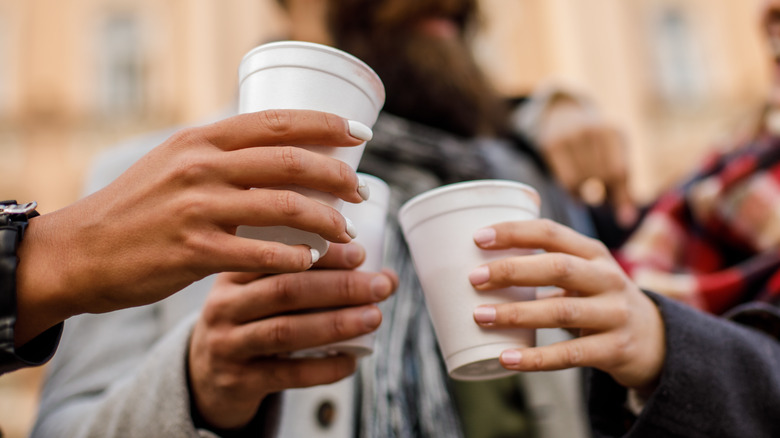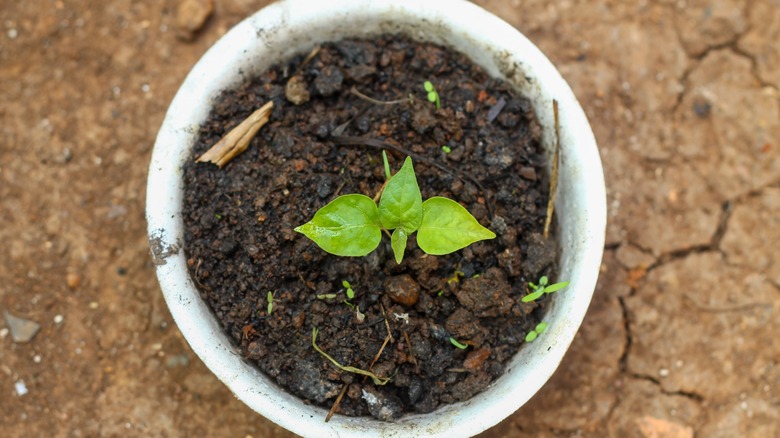Reuse Styrofoam Cups As An Inexpensive Seedling Starter
Growing flowers and vegetables from seeds rather than buying plants is economical and will allow you to be a part of the growing process from the very beginning. Choosing easy-to-grow varieties provides quick results that grab the attention and can even give you edible results! All you need is some potting mix, a warm, lighted spot, and a few containers to grow your seedlings in. Styrofoam cups that would otherwise be thrown away are ideal seedling starters.
Although styrofoam (also known as extruded polystyrene foam) is much maligned because it takes hundreds of years to break down in the trash, this characteristic actually works to your advantage when using these cups as seedling starters because they can be used again and again without decomposing. Just rinse them out and keep them for the next batch of seeds. Styrofoam also has good insulation properties (one of the reasons they were used for fast food drinks in the first place), which can help protect seedlings from unexpected cold snaps. If you have them, you can even use larger styrofoam clamshell boxes or meat trays to keep the pots organized. Used plastic or foil trays are other inexpensive options as well. Discover how to repurpose your styrofoam cups to grow plants instead of throwing them straight into the trash.
How to grow seedlings in styrofoam cups
The first thing to do is make three or four drainage holes in the bottom of the styrofoam cup. A pencil with a point will do the job. Try to keep the spaces between them more or less even. Overwatering is a common problem that results in weak seedlings, and while you still need to be careful to not overwater plants, these holes allow excess water to drain into a tray underneath. Some people have also suggested adding broken-up styrofoam to the potting mix to improve drainage. However, this actually offers no benefits and may even cause harm to the plant. Instead, stick with your simple drainage holes.
Next, you'll need to fill the container, and a combination of compost, coir (made from coconut husks), and perlite is often recommended, though it's worth checking the instructions on your specific seed packet. Fill each pot to around 1-inch below the rim so there's room to add water without it spilling over. Some seeds like to be covered in the potting mix, but not all of them, so again, check the packet. Ensure that you water lightly as well. There are benefits to covering seedlings, and while a piece of glass is one way to do it, plastic wrap also works and is probably safer if kids are involved. Using styrofoam cups as a seedling starter isn't just inexpensive, it also takes an item that's usually considered harmful to the environment and turns it into something green.

